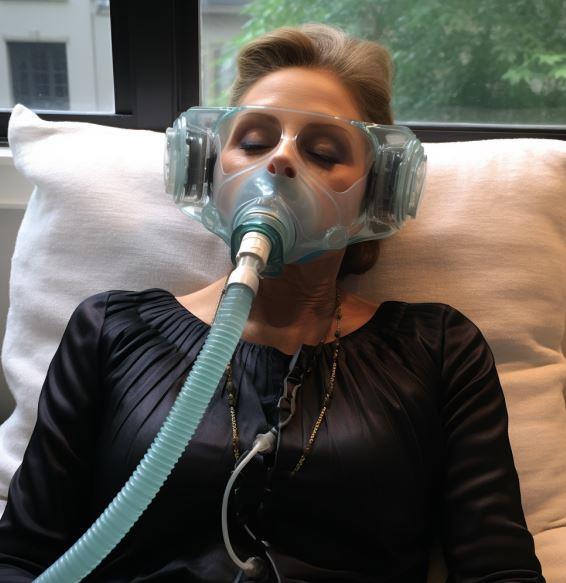Celebrities Who Died From Sleep Apnea: Understanding The Silent Killer
Sleep apnea is a serious medical condition that has claimed the lives of several well-known celebrities. Despite its prevalence, many people remain unaware of its dangers and symptoms. This article aims to shed light on this silent killer, highlighting the lives of famous individuals who lost their battles to sleep apnea.
Sleep apnea affects millions of people worldwide, yet it often goes undiagnosed. This condition interrupts breathing during sleep, leading to severe health complications and even death. Celebrities are not exempt from its grasp, and their stories serve as a poignant reminder of the importance of early detection and treatment.
By exploring the lives and struggles of these famous individuals, we hope to raise awareness and encourage readers to prioritize their health. Sleep apnea is preventable and treatable, but only if we take it seriously.
Read also:Jasper Polish A Comprehensive Guide To Transforming Your Automotive Finish
Table of Contents
- Biography of Celebrities Affected by Sleep Apnea
- What Is Sleep Apnea?
- Celebrity Cases of Sleep Apnea
- Risk Factors for Sleep Apnea
- Symptoms of Sleep Apnea
- Diagnosing Sleep Apnea
- Treatment Options for Sleep Apnea
- Preventing Sleep Apnea
- The Impact of Sleep Apnea on Health
- Raising Awareness About Sleep Apnea
Biography of Celebrities Affected by Sleep Apnea
Data and Biodata
Several high-profile individuals have succumbed to sleep apnea, leaving behind a legacy that serves as a warning to others. Below is a brief overview of some of these celebrities:
| Name | Date of Birth | Cause of Death | Years Active |
|---|---|---|---|
| John Candy | October 31, 1950 | Sleep Apnea | 1974–1994 |
| George Gobel | July 23, 1919 | Sleep Apnea | 1954–2003 |
| Dee Dee Ramone | September 18, 1951 | Sleep Apnea | 1974–2002 |
What Is Sleep Apnea?
Sleep apnea is a potentially serious sleep disorder characterized by repeated interruptions in breathing during sleep. These interruptions can last from a few seconds to minutes and may occur dozens of times per night. There are three main types of sleep apnea:
- Obstructive Sleep Apnea (OSA): The most common form, caused by the collapse of the airway during sleep.
- Central Sleep Apnea (CSA): Occurs when the brain fails to send proper signals to the muscles that control breathing.
- Complex Sleep Apnea Syndrome: A combination of both OSA and CSA.
Untreated sleep apnea can lead to serious health problems, including heart disease, stroke, and diabetes.
Celebrity Cases of Sleep Apnea
John Candy
Comedian and actor John Candy was beloved for his comedic roles in films like "Planes, Trains, and Automobiles" and "The Great Outdoors." Tragically, his life was cut short at the age of 43 when he died from complications related to sleep apnea. Candy's death brought attention to the dangers of this condition, particularly among individuals with obesity.
George Gobel
Known as "The Gomer Pyle of Comedy," George Gobel was a popular comedian and television personality. His death in 2003 was attributed to complications from sleep apnea. Gobel's story highlights the importance of seeking medical help for persistent sleep disturbances.
Risk Factors for Sleep Apnea
Certain factors increase the likelihood of developing sleep apnea:
Read also:Devi A Rising Star In The World Of Acting
- Obesity
- Family history of sleep apnea
- Smoking and alcohol consumption
- Nasal congestion
- Enlarged tonsils or adenoids
Understanding these risk factors is crucial for identifying individuals who may need further evaluation.
Symptoms of Sleep Apnea
The symptoms of sleep apnea can vary but often include:
- Loud snoring
- Gasping for air during sleep
- Daytime fatigue
- Difficulty concentrating
- Morning headaches
Recognizing these signs can prompt individuals to seek medical advice and potentially save their lives.
Diagnosing Sleep Apnea
Diagnosing sleep apnea typically involves a combination of physical exams, sleep studies, and patient history. A sleep study, or polysomnography, is often used to monitor breathing patterns during sleep. This test can confirm the presence and severity of sleep apnea.
Early diagnosis is key to preventing complications and improving quality of life.
Treatment Options for Sleep Apnea
Continuous Positive Airway Pressure (CPAP)
CPAP machines are the most common treatment for moderate to severe sleep apnea. These devices deliver a steady stream of air through a mask, keeping the airway open during sleep.
Lifestyle Changes
Simple lifestyle adjustments can also help manage sleep apnea:
- Weight loss
- Regular exercise
- Avoiding alcohol and sedatives
- Sleeping on your side
Preventing Sleep Apnea
Prevention strategies focus on reducing risk factors:
- Maintaining a healthy weight
- Practicing good sleep hygiene
- Managing stress
- Seeking treatment for underlying conditions
By adopting these habits, individuals can significantly lower their risk of developing sleep apnea.
The Impact of Sleep Apnea on Health
Untreated sleep apnea can lead to a range of health issues:
- High blood pressure
- Heart disease
- Stroke
- Type 2 diabetes
- Depression
Addressing sleep apnea is essential for maintaining overall health and well-being.
Raising Awareness About Sleep Apnea
Raising awareness about sleep apnea is vital for reducing its impact on society. Educational campaigns, public health initiatives, and increased research funding can all contribute to this effort.
By sharing the stories of celebrities who died from sleep apnea, we can inspire others to prioritize their health and seek treatment when necessary.
Conclusion
Celebrities who died from sleep apnea remind us of the importance of recognizing and addressing this condition. Early diagnosis and treatment can prevent complications and improve quality of life. If you suspect you or a loved one may have sleep apnea, consult a healthcare professional immediately.
We encourage readers to share this article with others and engage in the conversation about sleep apnea. Together, we can make a difference in preventing unnecessary deaths and promoting better health for all.
References
For more information, please refer to the following sources:


